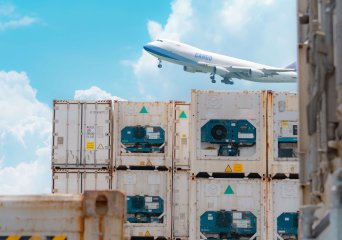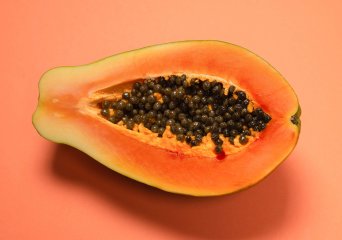
Papaya
Postharvest management of papaya knows many aspects. Please select the page of your interest below. If you need direct consultation on proper postharvest management of papaya, please contact our expert through the contact form below.

The papaya supply chain
Papaya (Carica papaya L.), originating from Mexico, is predominantly produced in countries like India, Brazil and Indonesia. These countries contribute to almost 90% of the world's total papaya production, which amounts to 13 million tons. Of these, Mexico and Brazil are the main exporters. The fruit's growth cycle spans 8-9 months with weekly harvests year-round. By using appropriate harvest processes and chain conditions, quality can be maintained longer and shelf life can be extended. Besides being consumed either green or ripe, papaya is also processed for food and for latex in pharmaceuticals.

Harvest practices for papaya
Proper picking of papaya is a precondition to being successful in the rest of the supply chain. The performance of the pickers is therefore critical to deliver a good quality product. Fruit must be harvested by trained workers, ensuring uniform size and maturity within each shipment. Always avoid dirty or dusty fruit and handle all fruit gently. Harvesting and packaging are aligned with customer demand, selecting green fruit for salads and riper fruit for immediate consumption.

Packhouse practices for papaya
Upon arrival at the packhouse, each batch of fruit undergoes initial quality checks. This is followed by water immersions to remove latex and soil, often followed by disinfection. Fruit is then inspected, graded by size and ripeness, and treated with fungicides. After drying (via tunnel, air, or towels), the fruit is packed, palletized, labelled, and shipped. Throughout this process, only healthy fruit, regardless of ripening stage, is selected for storage and transport.

Transport practices for papaya
Many aspects are important when transporting papaya towards their final destination. One of them is maintenance of roads to minimize mechanical damage during transport. Careful loading of trucks to prevent fruit movement and collapse, using good shock absorbers and low-pressurized tires. Another aspect is avoiding transport of papaya with ethylene-producing or sensitive commodities and ensuring the fruit has uniform ripeness stages. Refrigerated trucks and air transport should regulate temperature according to ripeness to prevent chilling injury and maintain > 95 % relative humidity to reduce water loss.

Papaya quality
Papaya quality depends on key factors: good starting quality at harvest, careful handling and transport, proper management of room temperature and humidity, and the type of packaging. These key factors establish fruits with high quality and free from disorders or rot.

Papaya diseases and disorders
Good quality papaya is free from diseases and disorders! Customers are not willing to purchase fruit presenting rots or damaged skin. Furthermore fruit that looks good on the outside, but presenting internal disorders will not lead to happy customers. There are many different diseases and disorders, which are not always easy to recognize. A good diagnosis of the fruit’s health is important. By recognizing the symptoms of a disease or disorder, it can be linked to the cause. If you know the cause, you know what measures can be taken to prevent the disease or disorder in the future.

Research results papaya
In our applied research, we study postharvest management of many fresh products. On this page, some results from our research relevant for papaya are listed.